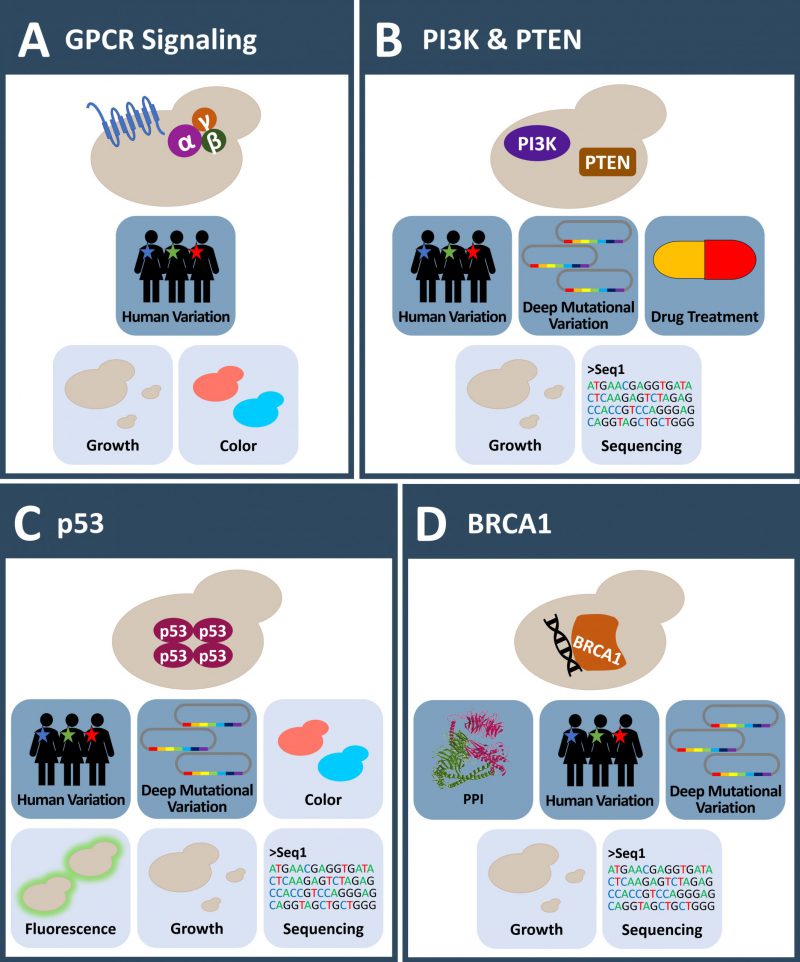Back to article: Exploring absent protein function in yeast: assaying post translational modification and human genetic variation
FIGURE 2: Yeast systems to investigate human mutation in cancer proteins. (A) GPCR signaling plays an outstanding role in humans, yet only two GPCR related pathways are present in yeast. These pathways can be engineered to investigate human regulators of GPCR signaling and mutations in these proteins in yeast. (B) Several aspects of the human PI3K-PTEN-AKT signaling pathway are studied in yeast in the absence of endogenous PI3K activity. Membrane targeting of PI3K in yeast causes a growth phenotype and thus enables the testing of inhibitors. Mutations in PI3K or PTEN frequently found in developing cancers are functionally assessed in yeast. (C) Yeast is missing a p53/TP53 homologue. Expression of the human tumor suppressor p53 results in growth defects in yeast. A plethora of assays to investigate the protein function are established in yeast. This allows observing the influence of human variation and the effects of p53 cancer mutations in this system. (D) Though absent in yeast, expression of the BRCA1 tumor suppressor impacts HR activity of yeast resulting in various phenotypes. This is the basis for the investigation of BRCA1 mutations. Deep mutational scanning of BRCA1 has been applied to comprehensively investigate the effects of amino acid substitutions on protein E3 ligase activity and PPI. (A-D) Icons with dark blue background: observable; Icons with light blue background: readout; MS: mass spectrometry; PPI: protein-protein-interaction.

